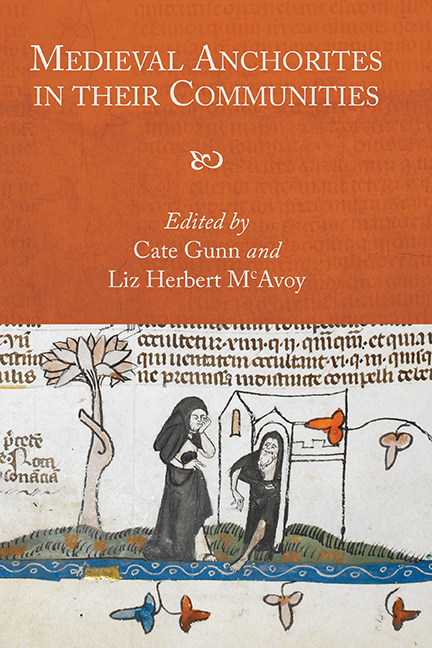Book contents
- Frontmatter
- Dedication
- Contents
- List of Illustrations
- Acknowledgements
- List of Contributors
- Abbreviations
- Introduction: ‘No Such Thing as Society?’ Solitude in Community
- 1 ‘O Sely Ankir!’
- Part I Religious Communities
- Part II Lay Communities
- Part III Textual Communities
- Bibliography
- Index
- Miscellaneous Endmatter
1 - ‘O Sely Ankir!’
Published online by Cambridge University Press: 30 August 2017
- Frontmatter
- Dedication
- Contents
- List of Illustrations
- Acknowledgements
- List of Contributors
- Abbreviations
- Introduction: ‘No Such Thing as Society?’ Solitude in Community
- 1 ‘O Sely Ankir!’
- Part I Religious Communities
- Part II Lay Communities
- Part III Textual Communities
- Bibliography
- Index
- Miscellaneous Endmatter
Summary
THE poems of Charles d'Orléans (d. 1465) are well known for their employment of imagery – natural enough in their author's circumstances – of exile, solitude and imprisonment. Many of the better known among them are also marked by a playful mix of religious forms with erotic content (one thinks of the much-anthologised ‘My gostly fader I me confesse…’). Thus, while it remains a surprise to find a courtly lyric making use of anchoritic imagery, there is a certain inevitability to Charles's comparison of himself, in Ballade 97 of his English narrative-cum-lyric sequence Fortunes Stabilnes, to an anchorite in his cell. Here is the poem in full:
O sely Ankir, that in thi selle
Iclosid [enclosed] art with stoon and gost not out,
Thou maist ben gladder so forto dwelle
Then y with wanton [undisciplined] wandryng þus abowt
That haue me pikid amongis þe rowt [crowd]
An endles woo withouten recomfort,
That of my poore lijf y stonde in dowt.
Go, dul complaynt, my lady þis report.
The anker hath no more him forto greue
Then sool alone vpon the wallis stare,
But, welaway, y stonde in more myscheef,
For he hath helthe and y of helthe am bare,
And more and more when y come where þer are
Of fayre folkis to se a goodly sort –
A thousand fold that doth encrese my care.
Go, dull complaynt, my lady þis report.
It doth me thynke, 'Yondir is fayre of face,
But, what, more fayre yet is my ladi dere.
Yond on is small, and yonde streight sidis has;
Her foot is lite, and she hath eyen clere
But all ther staynyd my lady [my lady would eclipse], were she here.’
Thus thynke y, lo, which doth me discomfort,
Not for the sight but for y nare [might not be] hir nere.
Go, dull complaynt, my lady þis report.
Wo worthe them which þat raft [deprived] me hir presence!
Wo worth the tyme to y to hir resort!
Wo worthis me to be thus in absence!
Go, dull complaynt, my lady þis report.
The ballade uses anchoritic imagery in a particularly interesting way, but it is not unique in Charles's English output.
- Type
- Chapter
- Information
- Medieval Anchorites in their Communities , pp. 13 - 34Publisher: Boydell & BrewerPrint publication year: 2017

